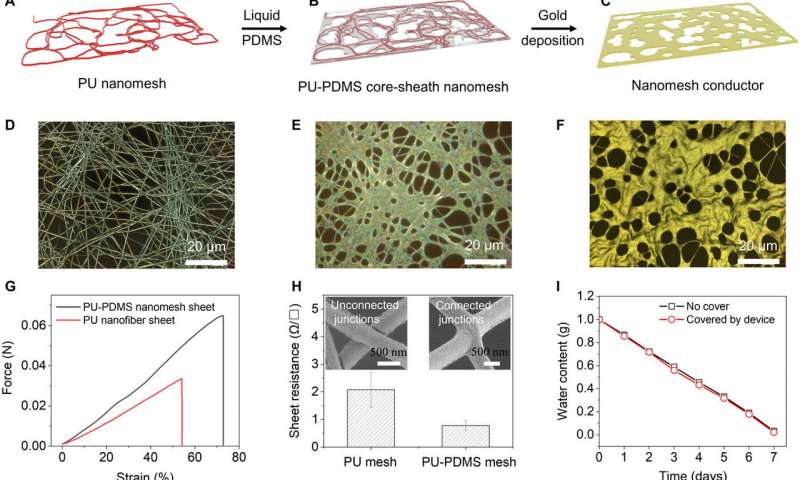Comfortable strain gages can be directly placed on
human skin to monitor continuous motion activity with widespread
applications in robotics, human motion detection, and personal
health care. However, it is challenging to develop an on-skin
strain gage to monitor long-term human body motions without
disturbing the natural movement of skin. In a new report now on
Science Advances, Yan Wang, and a team of scientists in electrical
engineering at the University of Tokyo and the Center for Emergent
Matter Science in Japan presented an ultrathin and durable nanomesh
strain gage. The device allowed continuous motion activity to
minimize the mechanical constraints on natural skin motion. They
engineered the device using reinforced
polyurethane-polydimethylsiloxane (PU-PDMS) nanomeshes for
excellent sustainability and durability. The geometry and softness
of the device provided minimal mechanical interference for natural
skin deformations. During speech tests, for instance, the
nanomesh-attached face showed skin strain mapping similar to
natural skin without nanomeshes. Wang et al. demonstrated long-term
facial mapping to detect real-time, stable body movements with
surface-bound nanomesh sensors.




